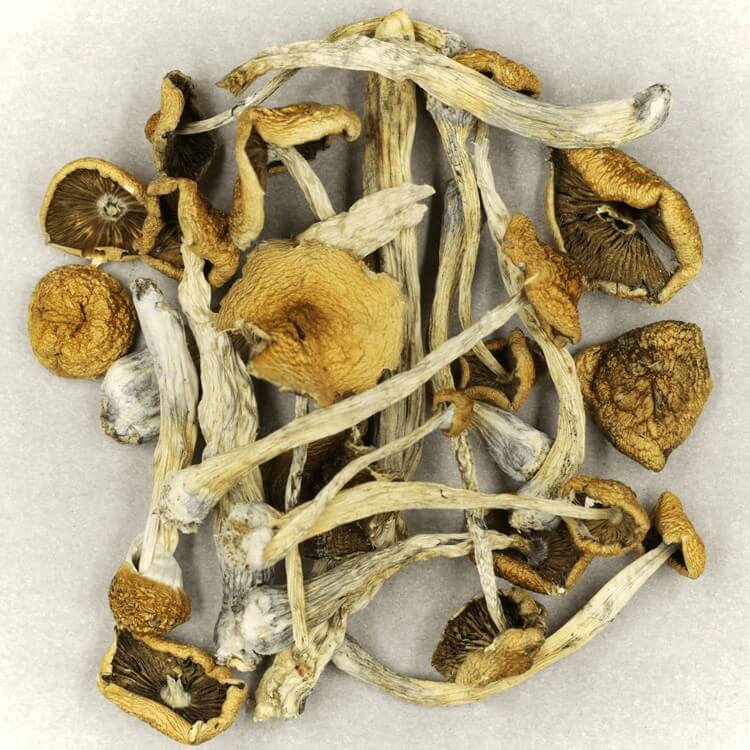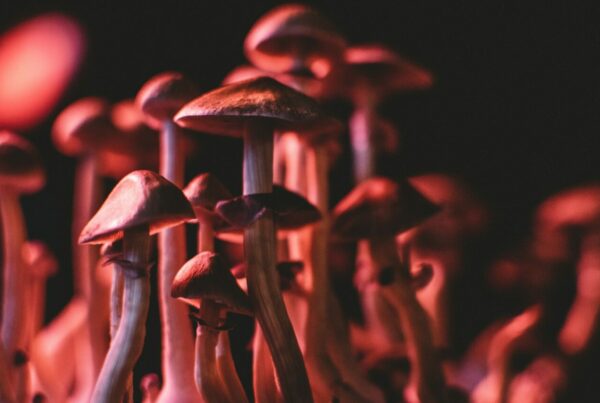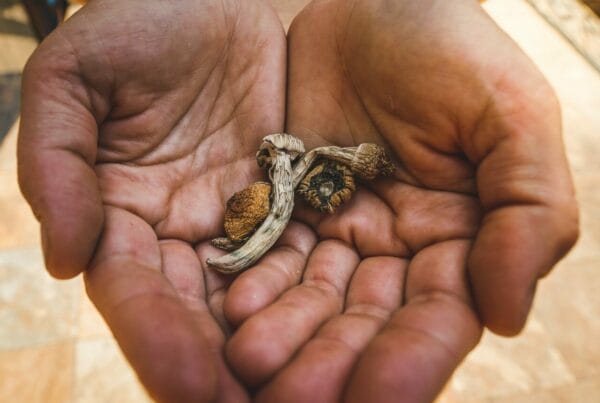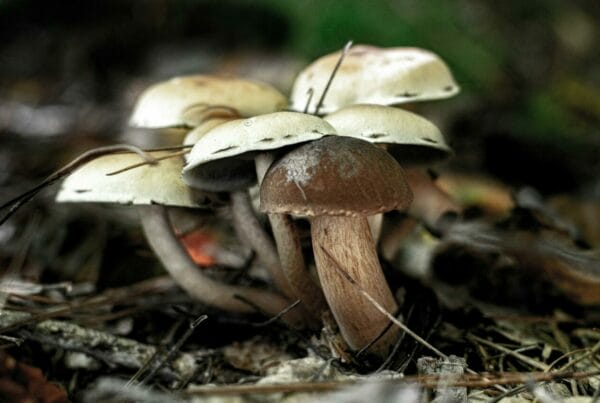Once thought of as nothing more than a fantasy, the strength of Psilocybe mexicana is now garnering serious attention due to ongoing psilocybin research. The world of psychedelic research consistently uncovers new therapeutic benefits, progressively encouraging its recognition in the medical realm. This burgeoning field is seen as full of potential by experts, who are constantly working to determine safe dosage levels for medical applications.
Key Takeaways
- Researchers are leveraging advanced techniques like liquid chromatography and tandem mass spectrometry to ascertain the potency of mushrooms.
- Clinical trials are currently examining Psilocybe Mexicana and other mushroom species to evaluate their potential therapeutic benefits.
- The genetic diversity in magic mushrooms is vital for developing a precise dosage guideline.
Psychedelic Mushrooms: Journey from Mystery to Scientific Discoveries
While in the past, the benefits of Psilocybe Cubensis were only known for a few conditions, psilocybin is now making substantial progress in revealing its medicinal potential.
Experts are investigating the capabilities of Psilocybe Mexicana and other potent strains through clinical trials and comprehensive research. Regardless of whether the subjects are in vivo or in vitro, this strain is efficient in demonstrating the genuine effects and advantages of the fungus species.
Psychedelics in the Marketplace
From being concealed to now being in the spotlight—ongoing advancements and findings are increasingly drawing public attention, especially from those seeking therapeutic answers. Conventional mental health treatments often disappoint, instigating people to look for more dependable alternatives.
Welcome to the age of magic mushrooms.
Individuals grappling with mental health disorders are turning to psilocybin, which has demonstrated potential in treating depression, alcohol addiction, anxiety, compulsions, tics, chronic pain, and more.
Currently, medical professionals are probing novel ways to accurately determine the ideal dosage for safe patient administration. A group of researchers at the University of Texas, in particular, has devised a model to extract psilocybin and psilocin concentrations.
It’s feasible to clinically validate the potency of magic mushrooms.
The Distinct Attributes of Mexicana
The Golden Teachers, Blue Meanies, and B-Plus varieties of magic mushrooms have been the subject of extensive study. However, for a comprehensive understanding of the safe use of these mushrooms, it’s essential to explore other species as well.
Among these, the Mexicana species has gained popularity within the research community. Its age-old existence and relatively lower potency, which aligns better with medical drug standards, make it an attractive subject for study.
Even though the potency of this Mexican strain isn’t as high as some other species, it can have a similar impact as the more well-known strains. Consequently, with the growing interest in microdosing among patients, this strain stands out as a viable choice.
Just like other strains, it maintains consistent levels of the psychoactive compounds psilocybin and psilocin. You might wonder, why should one opt for this strain over others? The key lies in its historical and anthropological importance.
Delving into the Rich History of “Mexican” Mushrooms
In the past, the psilocybe mexicana naturally thrived in moss. These psilocybin mushrooms were highly esteemed by the indigenous peoples due to their wide-ranging applications, often linked to mystical or otherworldly experiences.
Delving deeper into the subject of Mexican mushrooms, they were first used by the natives of North and Central America over 2000 years ago. The Aztecs, an ancient civilization, referred to these mushrooms as “teonanácatl”, which translates to the “food of the Gods” in their native language.
Even though the Aztecs might not have been familiar with contemporary terminology, they would undoubtedly attest to the transformative, emotionally profound, and mentally balancing effects of the Mexicana if they were around today.
This mushroom species has managed to retain its natural psilocybin concentrations despite different cultivation methods, underscoring its authenticity. This authenticity is a universally accepted standard that psychedelic researchers and institutions hold in high regard.
Innovative Methods for Testing Psilocybin Content and Potency
A team comprised of ten researchers from the University of Texas at Arlington and other research institutions has devised a novel method for testing the potency of psychoactive compounds in mushrooms. This groundbreaking method combines liquid chromatography and tandem mass spectrometry.
Below are two pioneering techniques:
- Liquid chromatography is a technique used to separate and analyze different components within a chemical mixture. In this context, it’s utilized to isolate active chemicals in shrooms. The technique involves passing a liquid sample through a column packed with a solid (the stationary phase). Different chemicals within the sample have varying interactions with the stationary and mobile phases, resulting in their separation at different rates as they traverse through the column.
- Spectrometry is commonly used to study the interaction between matter and electromagnetic radiation across various wavelengths. It identifies and quantifies substances based on the unique wavelengths of light that molecules absorb and scatter. This allows the examination of the electronic, vibrational, and rotational states of the chemical.
This methodology was utilized on five different magic mushroom strains. The researchers found that the average total levels of psilocybin and psilocin in these strains ranged from 0.879 to 1.36. These concentrations exceeded those of many other varieties, such as Bull Run and Cambodian. They confirmed the accuracy of their study by comparing their findings with results from other independent labs.
The consistency of the results between the two labs further confirms the reliability of their testing procedure in accurately assessing the potency of the shrooms.
If these findings are validated by experts, it could lead to the introduction of a new set of techniques to the existing psychedelic strength testing methods, serving as an extra safety measure to prevent incorrect dosage determinations.
Expanding Research to Other Species
There are numerous benefits to expanding research to other species. It could enrich our understanding of the health benefits of different strains, and present foundational data on the effects of less potent mushrooms.
Moreover, it could assist in educating individuals about the influence of varying dosages on the psychedelic experience. By comparing strains like Mexicans with more potent ones such as Psilocybe Cubensis, researchers could determine how varying concentrations of active compounds may impact therapeutic results.
For example, the Blue Meanies strain produces more potent hallucinogenic effects, which could be effective in treating conditions like depression with higher doses. On the other hand, less potent strains might be more suitable for microdosing or subtler applications such as mood enhancement or focus improvement.
Genetic Diversity Leads to Safer Treatments
It’s not widely recognized that different cultivars or varieties possess distinct genetic profiles, and
There exists a wide array of psilocybin mushrooms, each differing in potency, chemical composition, and effects. This diversity allows medical practitioners to choose the most suitable type for particular medical applications and adjust dosages to fit individual requirements. This approach minimizes risks and maximizes benefits.
Take, for instance, Psilocybe Semilanceata (Liberty Caps) or Psilocybe cyanescens. Their unique alkaloid compositions could prove beneficial in alleviating anxiety. On the other hand, synthetically grown mushrooms might be more effective in addressing substance addiction and compulsive behaviors. This diversity fosters the development of personalized treatment plans that enhance safety and efficacy.
From this, we can infer that the genetic diversity among hallucinogenic mushrooms, coupled with new techniques for potency assessment and identification, plays a pivotal role in devising safer medical treatments.
Enhancing Safety in Medical Applications
Let’s ponder over the potential benefits of safer dosage practices.
- Decreased risk of overdosing: Accurate dosing mitigates the risk of overdose. This underlines the need for lucid product labels to avoid consumer misunderstanding.
- Increased predictability: Accurate dosing enables individuals to better predict the experiences they might encounter during their trips. This can reduce overwhelming sensations and anxiety, thereby enhancing patient satisfaction.
- Uniform measurement: Accurate dosing can encourage the adoption of a standard metric, facilitating easy reference to charts for possible effects.
Experience the Benefits of Accurately Dosed Mushrooms with Advanced Potency Testing | Buy Magic Mushrooms Online at Shrooms Online Canada
With the continued application of these innovative techniques, you can avoid unexpected effects. Pair this with smart online buying at Shrooms Online Canada. We offer dried mushrooms that ensure a serene, tranquil psychedelic journey without excessive psychoactivity. Buy psychedelics online in Canada via Shrooms Online Canada.
Frequently Asked Questions
Do Big Mexicans and Psilocybe Cubensis refer to the same mushroom?
No, Big Mexicans and Psilocybe Cubensis are distinct mushroom strains, so it’s crucial to avoid confusing them. Big Mexicans boast a higher compound concentration, ranging from 0.5% to 1%, which makes them substantially more potent
Psilocybe Azurescens is significantly more potent than Psilocybe Cubensis. It’s important to note their differences in appearance: Psilocybe Azurescens often displays a bell-shaped cap, whereas Psilocybe Cubensis usually presents a conical cap.
What is the peak concentration of psilocybin in Mexican mushrooms?
In Mexican mushrooms, the concentrations of psilocybin and psilocin can climb up to 0.25%. While these levels are comparable to those found in the Golden Teacher strain and are relatively low, they can still instigate powerful psychedelic experiences, which may potentially have therapeutic benefits.
What is the recommended safe dosage for medical purposes?
Usually, a dosage ranging from 1 to 2 grams is suggested. However, this can fluctuate depending on factors like methods of consumption, individual metabolic rate, and strain-specific potency. Some individuals opt for sub-threshold doses between 0.05 (50mg) and 0.025 grams (250mg) to mitigate the psychedelic effects.





